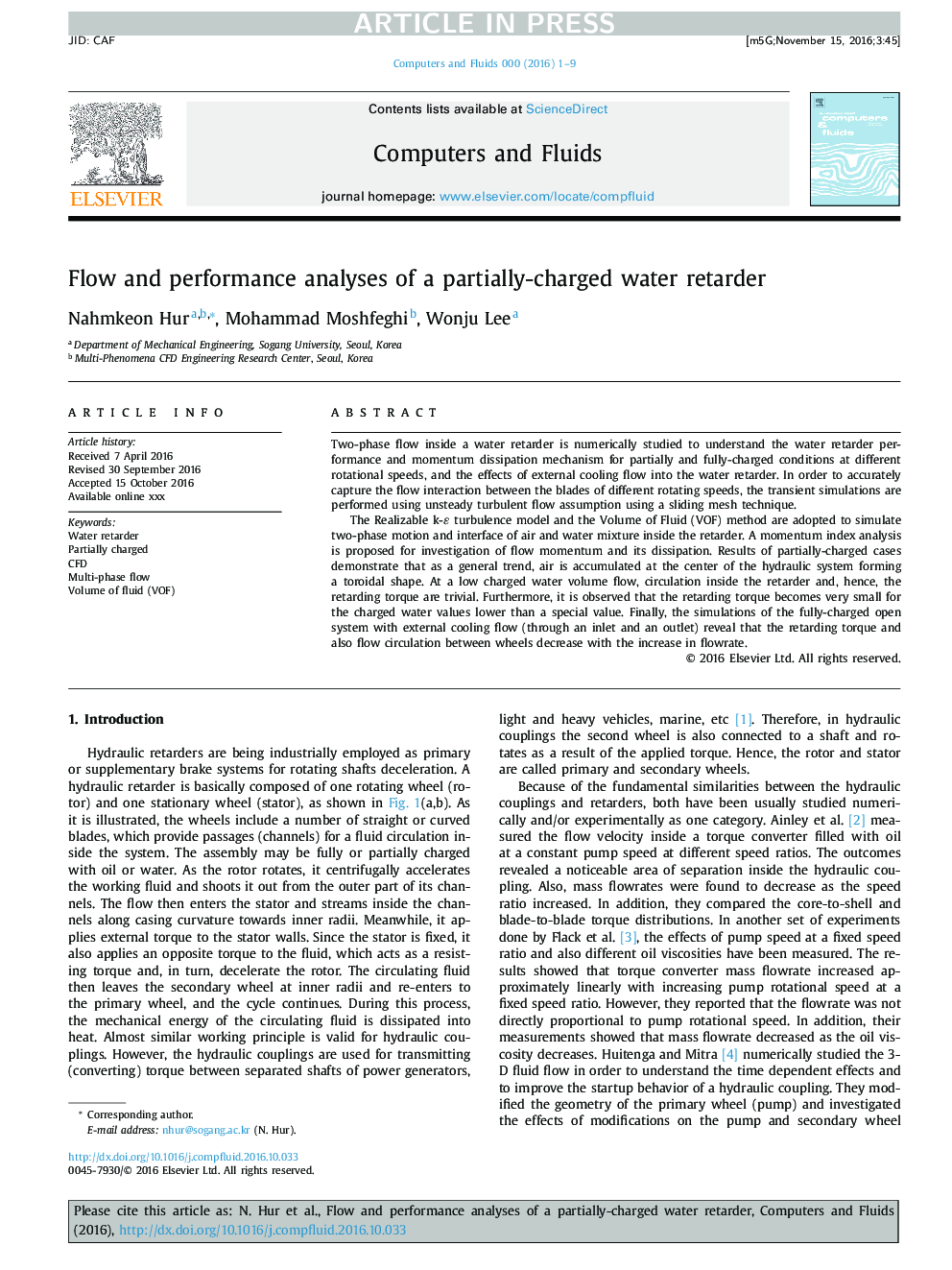| Article ID | Journal | Published Year | Pages | File Type |
|---|---|---|---|---|
| 7156393 | Computers & Fluids | 2018 | 9 Pages |
Abstract
The Realizable k-ε turbulence model and the Volume of Fluid (VOF) method are adopted to simulate two-phase motion and interface of air and water mixture inside the retarder. A momentum index analysis is proposed for investigation of flow momentum and its dissipation. Results of partially-charged cases demonstrate that as a general trend, air is accumulated at the center of the hydraulic system forming a toroidal shape. At a low charged water volume flow, circulation inside the retarder and, hence, the retarding torque are trivial. Furthermore, it is observed that the retarding torque becomes very small for the charged water values lower than a special value. Finally, the simulations of the fully-charged open system with external cooling flow (through an inlet and an outlet) reveal that the retarding torque and also flow circulation between wheels decrease with the increase in flowrate.
Related Topics
Physical Sciences and Engineering
Engineering
Computational Mechanics
Authors
Nahmkeon Hur, Mohammad Moshfeghi, Wonju Lee,
